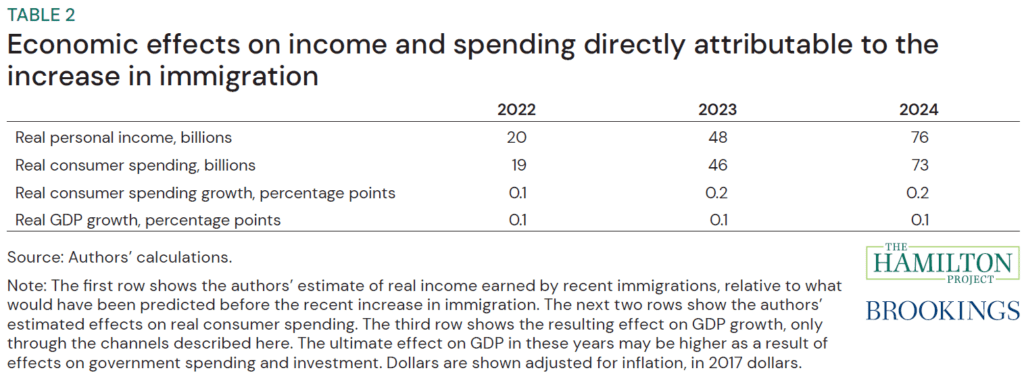In this analysis, we consider recent immigration flows and their potential macroeconomic implications. Interpreting the current labor market requires understanding recent immigration: how many people arrived and how they engaged in the economy. Recent estimates from the Congressional Budget Office (CBO) suggest much higher rates of recent immigration than were previously projected. In 2019, CBO projected that net immigration in 2023 would total 1.0 million people; Now, the agency estimates that net immigration last year was 3.3 million. Moreover, we estimate that CBO’s current immigration estimates suggest faster population and labor force growth in recent years than currently reported by the Bureau of Labor Statistics (BLS) using Census population estimates.
Prior to the pandemic, the range of population and labor force participation projections from CBO, the BLS, and the Social Security Administration (SSA) suggested that sustainable employment growth (that which did not put unwelcome pressure on inflation) would be between 60,000 and 140,000 per month in 2022 and, as more people retired, fall to between 60,000 and 100,000 per month by 2024 (table 1). According to the Employment Situation Report from BLS, employment growth in 2023 averaged 255,000 per month, two to four times the pace that had been considered sustainable.
Many observers took this as evidence that the labor market was much too tight and needed to soften significantly in order to get inflation down. But, using the new CBO estimates of net immigration released in January 2024, we estimate that the labor market in 2023 could have sustainably accommodated employment growth of 160,000 to 230,000. That is still below the actual monthly increases in employment in 2023, but far less so than previously estimated. Similarly, for 2024 we estimate sustainable employment growth will be between 160,000 and 200,000, approximately double the sustainable level that would have occurred in absence of the pickup in immigration according to the pre-pandemic projections from CBO, BLS, and SSA.

The unexpectedly high level of immigration also explains some of the surprising strength in consumer spending and overall economic growth since 2022. Moreover, we expect immigration flows to further boost economic growth in 2024.

Although we focus here on the near-term boost to the aggregate economy from greater immigration, the forces we describe are also relevant in the long term. The United States is facing a demographic challenge because of lower fertility rates and population aging. Recent Census projections make it clear that the growth of the U.S. population in coming decades will hinge critically on the level of immigration.




